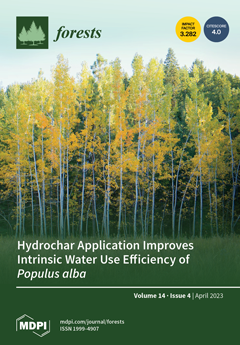In this study, the effect of different planting combinations on the amino acid concentration in the pericarp of
Zanthoxylum planispinum ‘dintanensis’ (hereafter referred to as
Z. planispinum) was studied, and the response of amino acid concentration to soil factors was clarified. The aim of this study was to screen optimal planting combinations and provide a theoretical basis for improving pericarp quality. Five planting combinations of
Z. planispinum in a karst rocky desertification area were selected as the research objects, and the concentration and accumulation of free amino acids in the pericarp of
Z. planispinum were analyzed. Then, combined with existing soil quality data, the pericarp quality of
Z. planispinum was comprehensively evaluated by principal component analysis, and the effect of soil factors on amino acid concentrations was clarified by redundancy analysis. The results are as follows: (1) except for arginine, serine, proline, alanine, tyrosine and cystine, the concentrations of other free amino acids significantly differed among the five planting combinations. In general, the planting combination has a great influence on the concentration of free amino acids in the pericarp of
Z. planispinum, especially essential amino acids; (2) free amino acid concentration in the pericarp of
Z. planispinum mostly increased in combination with
Sophora tonkinensis Gagnep. (hereafter referred to as
S. tonkinensis) and decreased in combination with
Prunus salicina Lindl; (3) principal component analysis showed that the concentration of free amino acid in the pericarp of
Z. planispinum was generally at a high level when combined with
S. tonkinensis or
Lonicera japonica Thunb. (hereafter referred to as
L. japonica). Among them, the amino acids in the pericarp of
Z. planispinum with
S. tonkinensis were closer to the ideal protein standard of FAO/WHO; (4) soil-available potassium, available phosphorus, microbial biomass nitrogen, available calcium and microbial biomass phosphorus in soil factors had significant effects on amino acid concentration after a redundancy analysis. It can be seen that the available nutrients and soil microbial biomass contribute greatly to the amino acid concentration of the pericarp. According to the soil quality and the amino acid quality of the pericarp, planting with
L. japonica can improve the amino acid quality of the pericarp of
Z. planispinum, as well as selecting
Z. planispinum +
L. japonica as the optimal planting combination.
Full article





